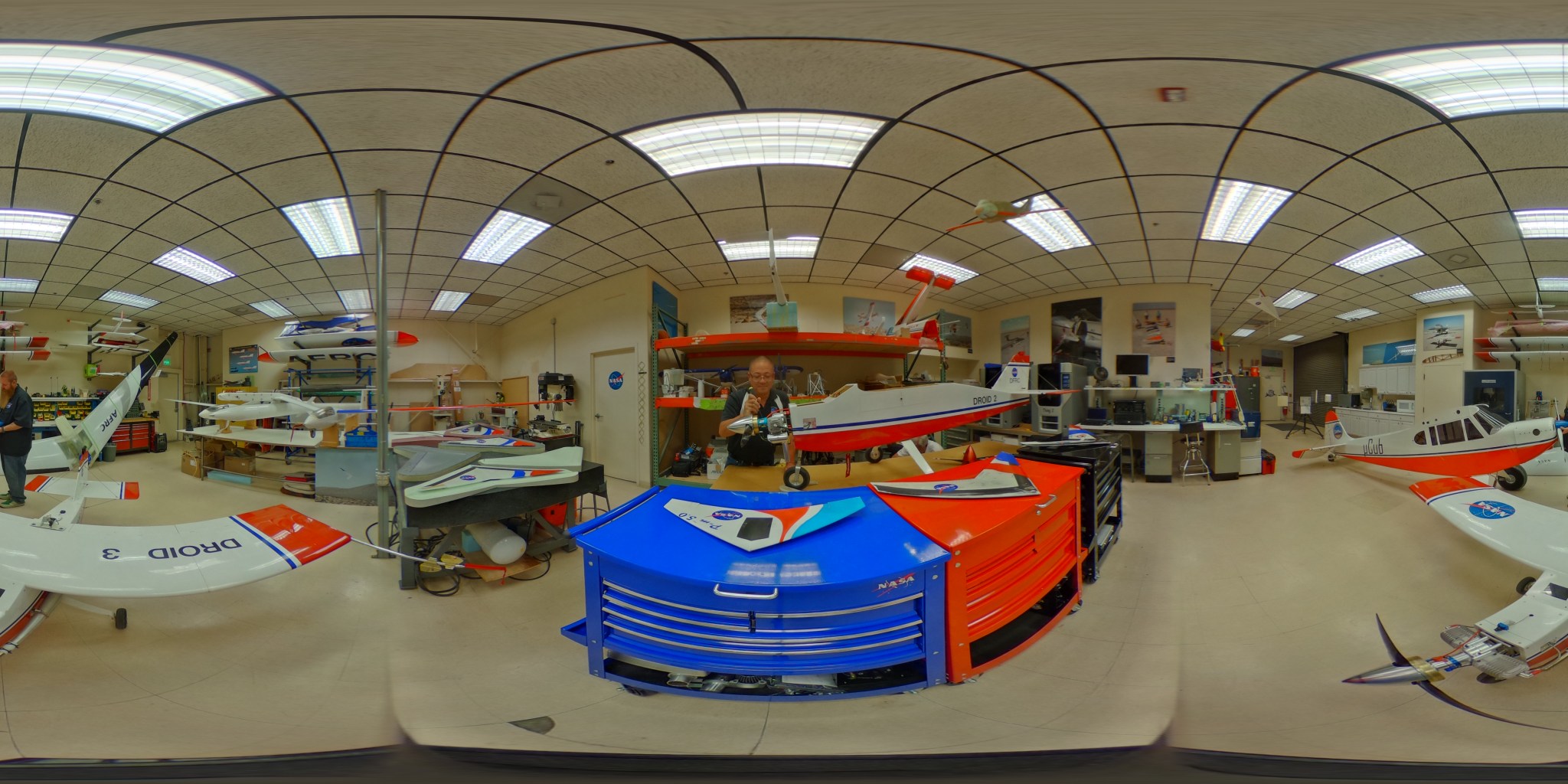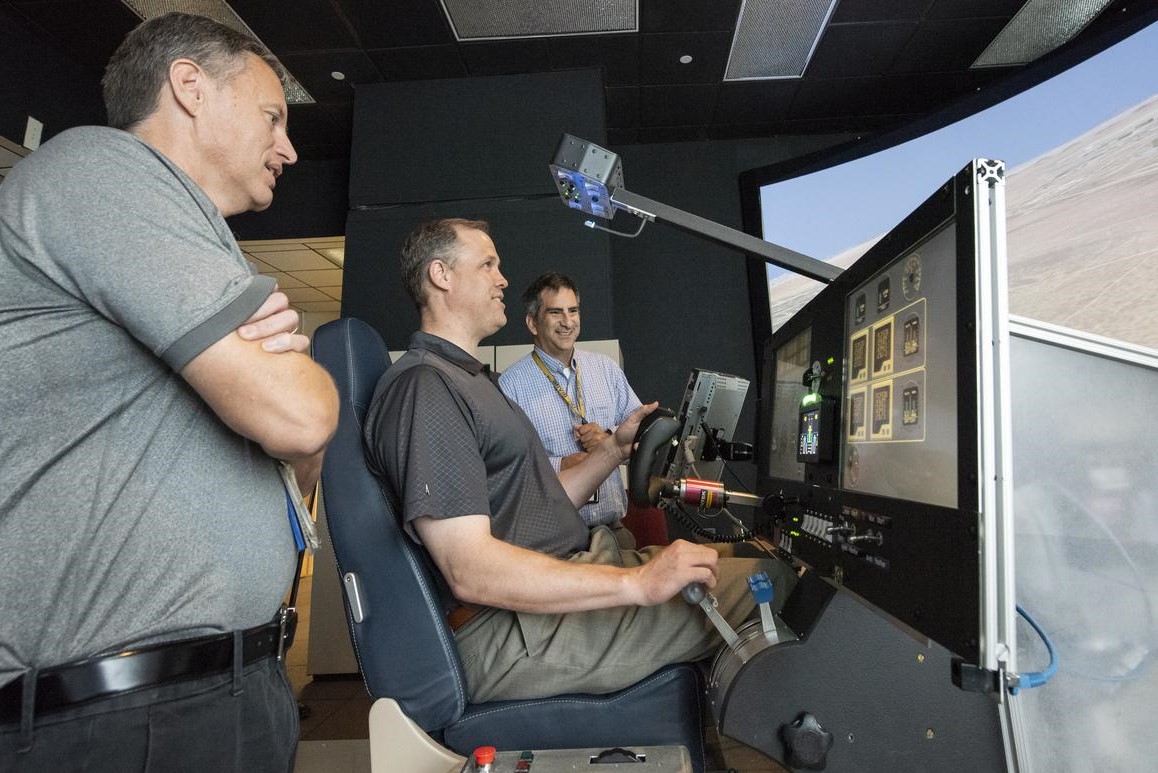
People can see F/A-18 jets prepared for flight and the control rooms and facilities used to lead to a successful mission in an expanded 3-D virtual tour of NASA’s Armstrong Flight Research Center (AFRC) in California.
Aviation enthusiasts first gained a 360-degree access to step inside the gates of AFRC when its “Go for Flight” 3-D virtual tour debuted in 2018. The first phase included a tour of historic aircraft flown at the center displayed near the entrance to AFRC, the main administration building, a view of an aircraft hangar, a control room and the back-ramp area where aircraft final preparations for flight begin.
“Before any of our flight research projects take to the air, the talented people from so many different groups and organizations contribute to making it possible,” said Kevin Rohrer, NASA Armstrong’s chief of Strategic Communications. “This latest segment of our virtual tour highlights some of the key areas.”
The first tour stop of the new phase is a 360-degree view of the Dale Reed Flight Research Laboratory, also known as the model shop, that uses subscale aerial vehicles to gather flight data in a lower cost environment that enable risk reduction. The journey continues at the X-57 flight simulator, where pilots can practice a mission or gain experience with new procedures. Next is the Armstrong Flight Loads Laboratory, which is a unique national laboratory where structural tests are conducted to support flight research.
The AFRC Engine Shop, which saves millions in repairs for engines that don’t have to be sent to other facilities or to manufacturers, is the next tour stop. From there, virtual tour attendees can see where life support technicians assist pilots with the gear that will help them endure the forces of flight.
Next up, the Dryden Aeronautical Range control room is where missions are monitored and coordinated that offer much for the viewer to see. The tour ends with a view of the center’s aircraft ramp where visitors see F-/A18 jets readied for takeoff on a flight mission.
The ramp was used for many historical events such as preparing the X-15 rocket plane for flight as well as periodic landings of the space shuttles. Armstrong was directly involved in the program for more than 35 years, hosting the Approach and Landing Tests of the Space Shuttle Enterprise starting in 1977, serving as the initial landing site early in the program and later transitioning to the alternate landing site for operational shuttles from 1981 until 2011.

Armstrong is NASA’s lead center for atmospheric flight research, operations and testing. The center’s facilities support the agency’s flight research goals to accelerate knowledge in science, aeronautics and space exploration. AFRC employees strive to enhance America’s technical knowledge by reaching out and inspiring students to pursue Science, Technology, Engineering and Mathematics (STEM) careers. By exploring innovative engineering practices, NASA contributes to the country’s economic vitality and stewardship of Earth.
Google Expeditions, a free immersive app, facilitates the virtual tours of Armstrong. For example, check out NASA’s Stratospheric Observatory for Infrared Astronomy or SOFIA aircraft. Other virtual journeys include tours of the surface of Mars, as captured by NASA rovers, and the Modern Figures Expedition, a virtual tour highlighting women in STEM.
The Google Expeditions app is available for free on Google Play and the Apple App Store. To go for flight at NASA Armstrong visit: NASA Armstrong’s Go for Flight.
The tours are also available at: Phase 1 and Phase 2.
Prepare for takeoff at NASA Armstrong!




























